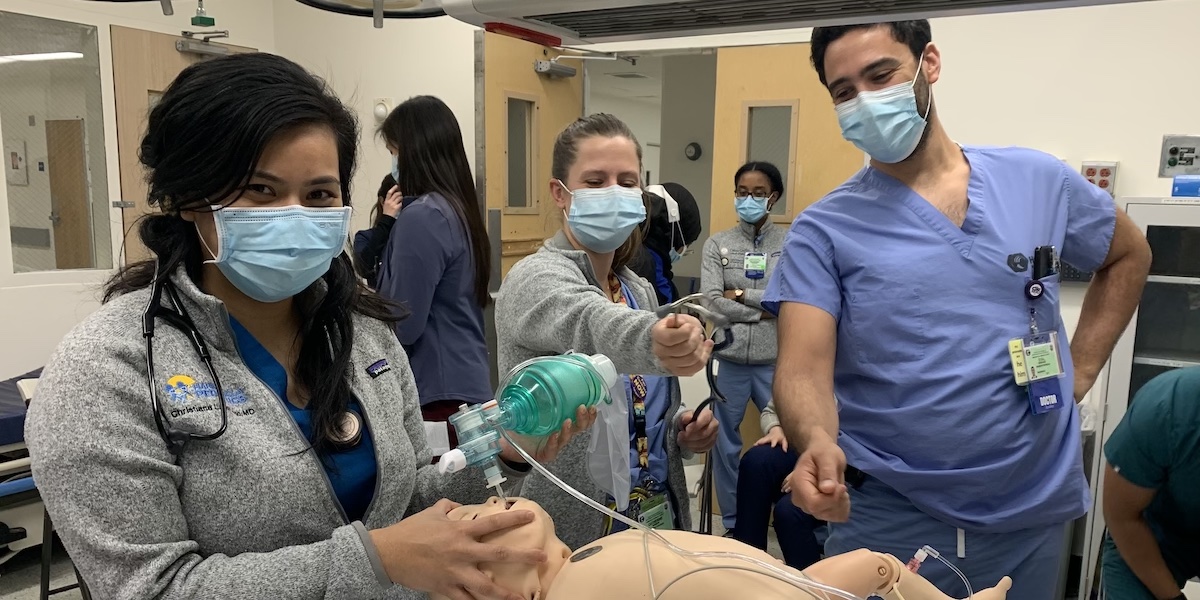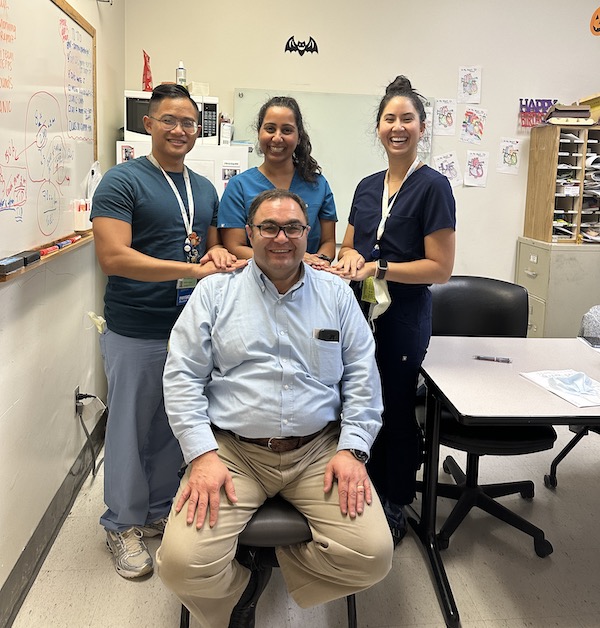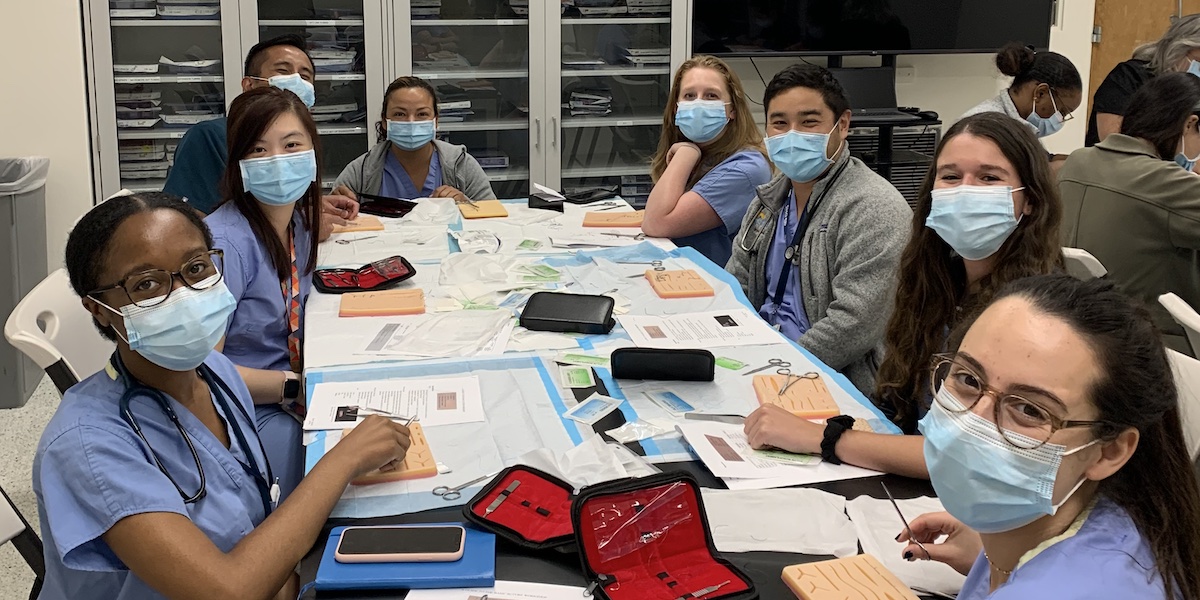
Call Schedule
Interns
In the PL-1 year, interns have night shift blocks throughout all their rotations. The shift system consists of long or short days and night shifts or rotating shifts (Peds ED).
Senior Residents
For the PL-2 & 3 years, senior residents take call, the frequency of which varies.
- Night shift system for Ward, PICU, and NICU
- Call frequency varies by rotation – averages of 6-8 days, but can be spread out as 14 days
- One call free month each year
Continuity Care Clinic
The Continuity Care Clinic is organized to provide a comprehensive clinical experience in longitudinal care of infants, children and adolescents. Each PL1 is assigned to one of six teams that meet for a half-day clinic weekly. A team is composed of PL1, PL2, and PL3 housestaff, a pediatric nurse practitioner, and a faculty member from the Division of General Pediatrics.
Team members follow their patients over three years. In addition, they become familiar with patients of other team members.
Continuity Care Clinic is rescheduled if a resident is post-call and when there are rotational experiences that may conflict.
Faculty Instruction & Supervision
Faculty provide direct supervision and teaching to interns and residents during rounds, lectures, clinics and conferences. Formal teaching rounds are held daily on each service. There are opportunities to review images in teaching rounds with our pediatric radiologists. In addition, faculty help create interactive online courses on the Harbor-UCLA Pediatrics eLearning site.
The ward service is attended by faculty members in the Department of Pediatrics. The subspecialty rotations are directed by one or more faculty members who maintain very close daily supervision of residents assigned to that particular service. Subspecialty rounds and conferences are conducted daily by each service.
Close supervision and excellent, readily available instruction are an integral part of all services. This is true in the pediatric emergency department and ambulatory care clinics as well. Subspecialty fellows serve as teachers and consultants rather than primary care managers.

Simulation

Harbor-UCLA Pediatrics provides simulation courses for procedures and mock emergency situations in our Simulation Center in conjunction with traditional teaching methods.
Self-directed learning is an essential component of resident education given duty hour constraints and an essential professional competency for practicing physicians. Asynchronous learning performed by residents is tightly integrated into rotational experiences and reinforces curricular goals. The eLearning program at Harbor-UCLA Pediatrics utilizes a robust state-of-the-art eLearning software program called Harbor Peds Portal, which is an open source learning management system. The eLearning site helps the faculty create online courses that focus on interaction and collaborative content construction. Harbor Peds Portal is an organic educational system that is constantly growing and evolving, while at the same time being available on-demand to residents at all times.
A growing body of evidence supports the effectiveness of simulation based on medical education as a tool to enhance the knowledge and performance of health care providers to contribute to patient safety. Simulation strengthens confidence and promotes learning by providing safe and supportive environments for mastering technical skills, practicing critical decision-making, learning system-based practices and protocols, or developing communication and interpersonal skills.
Internship: The First Year
During the PL1 year, the intern is exposed to a broad spectrum of general pediatric conditions in a well-supervised, supportive environment. Each intern works closely with a second or third year pediatric resident on the primary care services under the guidance of a faculty member.
Pediatric Ward Service
The pediatric ward service is a 25-bed unit for infants, children and adolescents. Both general pediatric and subspecialty patients are cared for by one of two ward teams, which consist of two interns and one second or third year pediatric resident working under the supervision of a faculty attending. Teams also include third year medical students from the David Geffen School of Medicine at UCLA as well as fourth year students completing sub-internships. Both medical and surgical patients are followed by the pediatric ward team.
Pediatric Emergency Department
The Pediatric Emergency Department rotation allows the intern to evaluate and treat acutely ill infants, children, and adolescents. In addition, since we are a designated Trauma Center for the County of Los Angeles, paramedic transports provide the intern with an opportunity for the assessment of trauma victims and other critically ill patients. Both medical and surgical patients are seen in the Pediatric Emergency Department and admitted to the Pediatric Ward.
Nursery
The nursery rotation occurs in several settings: the normal newborn nursery, the intermediate nursery, and the delivery room. The intern is given the opportunity to resuscitate term and preterm infants under the guidance of a pediatric resident, fellow, or faculty member.
Neonatal Intensive Care Unit
The Neonatal Intensive Care Unit (NICU) rotation exposes the intern to the evaluation and management of critically ill neonates with medical and surgical conditions. The intern is one of two on the NICU team and is supervised by a second or third year pediatric resident, neonatal fellow and a faculty member in the Division of Neonatology. Admissions to the NICU are augmented by transports from the greater Los Angeles area.
Subspecialty Clinics
The subspecialty clinics rotation occurs primarily in the outpatient clinic at Harbor-UCLA and is designed to expose residents to a wide variety of subspecialty services, including Pediatric Cardiology, Neurology, Nephrology, Allergy and Immunology, and Endocrinology.
Anesthesia
The anesthesia rotation is augmented by a dedicated airway skills curriculum and allows interns to master their intubation skills in order to function effectively as a senior resident on call on the pediatric ward and intensive care unit. The Simulation Center is also utilized to review airway skills.
Advocacy
The child advocacy rotation is designed to introduce the residents to the concept of advocacy and the community resources that the pediatrician can utilize to improve the health of children. Ambulatory clinical experiences occur in the context of elementary school communities, adult learning centers and special education environments. For more information, visit our Advocacy page.
Patient Safety & Quality Improvement
This one week rotation introduces interns to the hospital system and means of ensuring patient safety and quality improvement across all services.
Primer to Pediatric Mental Health
Interns rotate with the Child and Adolescent Psychiatry faculty primarily in the Child and Adolescent Psychiatric Emergency Room as well as for Inpatient consultations and if available, outpatient experiences. The goal is to provide and introduction that facilitates residents to be comfortable with the initial screening, diagnosis and management of common pediatric mental health conditions to provide this to their patients in continuity clinic.
The Second and Third Years
During their PL2 and PL3 year, residents have increasing patient care responsibilities and serve as supervisors for interns and medical students on primary care services. On subspecialty services, the resident serves as a consultant, evaluating both inpatients as well as outpatients with subspecialty faculty and fellows.
Pediatric Ward Service
As the supervisory resident on the pediatric ward service, the resident is responsible for the initial evaluation, daily management and discharge of all pediatric patients on the team. Working closely with the attending physician as well as the consult services, there are many opportunities to teach interns and medical students about common as well as complex medical and surgical conditions.
Pediatric Emergency Department
As a PL2 and PL3 in the Pediatric Emergency Department, the resident provides oversight and is responsible for the disposition of patients. Interns and medical students present cases to the resident and the attending physician, and the resident assists in developing a treatment plan and contacting pediatric and surgical consult services. All patient transports to the Pediatric ED also are evaluated by the PL2 or PL3 in charge. In addition, pediatric residents work closely with housestaff from Emergency Medicine in the evaluation and stabilization of trauma patients.
Neonatal Intensive Care Unit and Nursery
In both the NICU and in the nursery, the resident serves as the team leader and supervises interns from the Departments of Pediatrics and Family Medicine in the care of the critically ill infants, preterm babies and healthy, term neonates. The resident also is responsible for attending and supervising all neonatal resuscitations in the delivery room and in the NICU.
Pediatric Intensive Care Unit
The Pediatric Intensive Care Unit (PICU) is a 10-bed unit dedicated to the management of critically ill infants, children, and adolescents. The resident is an integral member of the ICU team which consists of the resident, a pediatric nurse practitioner, a critical care fellow, and a faculty member from the Division of Critical Care.
Nursery
Our third year residents have another rotation in Nursery, this time spending four half-days a week at Kaiser Bellflower Nursery. When not at Kaiser, residents spend time supervising interns and medical students in the care of patients at the Harbor UCLA nursery and with neonatal resuscitation.
Night Shift
Senior residents cover the pediatric ward, neonatal intensive care unit and pediatric intensive care unit on weeknights. The rotations allow the senior residents’ autonomy and time for reading and teaching interns and medical students. Night shift residents are also involved in patient transfers from other hospitals.
Subspecialty Services
Each of the subspecialty services, including Hematology and Oncology, have both inpatient and ambulatory experiences and allow participation in specialized procedures such as bone marrow biopsies.
Electives
The elective rotations give the resident an opportunity to pursue special interests either at Harbor-UCLA or at other affiliated institutions. This time may be spent on a clinical rotation or performing clinical or lab based research.
Adolescent Medicine
The adolescent medicine rotation consists of ambulatory experiences at several different sites, including a college student health service, a school-based clinic, and a hospital-based teen clinic. Residents are given an opportunity to prepare and deliver a conference on a topic of their choice.
Ambulatory Rotation
For the Ambulatory rotation, our residents rotate with The Children’s Clinic Serving Children and Their Families in Long Beach, which is a Federally Qualified Health Center. Here the residents are able to experience an outpatient clinic setting with a similar population group in a different model of care delivery.
Clinicopathological Conference
The Clinicopathological Conference (CPC) is a long-standing tradition of the pediatric residency program. Each PL3 receives a clinical case and is given two weeks to prepare a thorough evaluation and assessment of the condition which is presented in Pediatric Grand Rounds.
Teaching Rounds & Conferences
Regularly scheduled teaching conferences complement the daily teaching rounds lead by faculty on all the inpatient services. In addition to the conferences listed below, daily morning rounds provide patient-specific teaching to the ward and pediatric intensive care unit senior residents post-call. A board review course and additional case-based teaching conferences are consolidated for all residents during protected time for didactics.
Monday
7:30 am – 8:15 am Morning Report
Tuesday
7:30 am – 8:15 am Morning Report
2:00 pm – 3:00 pm Dr. Smith NICU/Nursery Teaching Rounds
Wednesday
7:30 am – 8:15 am Morning Report
8:30 am – 9:30 am Neonatal Teaching Conference (NICU & Nursery residents)
Thursday
7:30 am – 8:15 am Morning Report
8:30 am – 9:30 am Pediatric Grand Rounds
Friday
8:30 am – 9:30 am Clinical Case Conference
12:00 pm – 3:00 pm Resident Didactics
Monthly Conferences! M&M on Thursdays at noon. Journal club during Resident Didactics.
Residents attend additional division-specific teaching conferences when they are on electives, such as the Endocrine Clinical Teaching Conference and Infectious Diseases Grand Rounds.
Yearly Schedule
The three-year schedule includes a broad mix of inpatient and outpatient experiences similar to the schedule below. Individual schedules may have minor variations. The schedule will also incorporate six blocks of experiences designed by the program directors, faculty advisor, mentor, and resident to prepare the resident for their individual career goals and interests.
| First Year (PL1) | Blocks* | Service |
|---|---|---|
| 3.5 | Pediatric Ward | |
| 1 | Night Shift – Pediatric Ward | |
| 1.5 | Neonatal Intensive Care Unit | |
| 0.5 | PM Neonatal Intensive Care Unit | |
| 1 | Newborn Nursery | |
| 1.5 | Pediatric Emergency Department | |
| 1 | Subspeciality Clinic | |
| 1 | Child Advocacy | |
| 0.5 | Primer to Pediatric Mental Health | |
| 0.5 | Anesthesia/Hospital Peds/Quality Improvement | |
| 1 | Vacation | |
| Second Year (PL2) | Blocks* | Service |
| 1 | Pediatric Ward | |
| 1 | PM Pediatric Ward or PICU | |
| 0.5 | Neonatal Intensive Care Unit | |
| 0.5 | PM Neonatal Intensive Care Unit | |
| 1 | Pediatric Intensive Care Unit | |
| 1 | Community Pediatrics | |
| 1 | Pediatric Emergency Department | |
| 1 | Adolescent Medicine | |
| 1 | Hematology/Oncology | |
| 1 | Neurology | |
| 1 | Behavior & Development | |
| 2 | Electives** | |
| 1 | Vacation | |
| Third Year (PL3) | Blocks* | Service |
| 1 | Pediatric Ward | |
| 1.5 | Night Shift – Pediatric Ward and/or PICU | |
| 0.5 | Neonatal Intensive Care Unit | |
| 0.5 | PM Neonatal Intensive Care Unit | |
| 1 | Pediatric Intensive Care Unit | |
| 1 | Primary Service based on Career Goals | |
| 1 | Newborn Nursery | |
| 1 | Pediatric Emergency Department | |
| 0.5 | Clinicopathological Conference | |
| 4 | Electives** | |
| 1 | Vacation |
Notes:
* There are 13 blocks of 28 days each in the schedule for all pediatric residents.
** Electives may consist of subspecialty (those listed below and also including Pulmonology, Child Abuse, Dermatology, Sports Medicine, Child Psychiatric, Public Health), research, individually developed elective, and career-based primary services based on individual career goals/interests. Below are links to the subspecialty divisions within the Department of Pediatrics:

